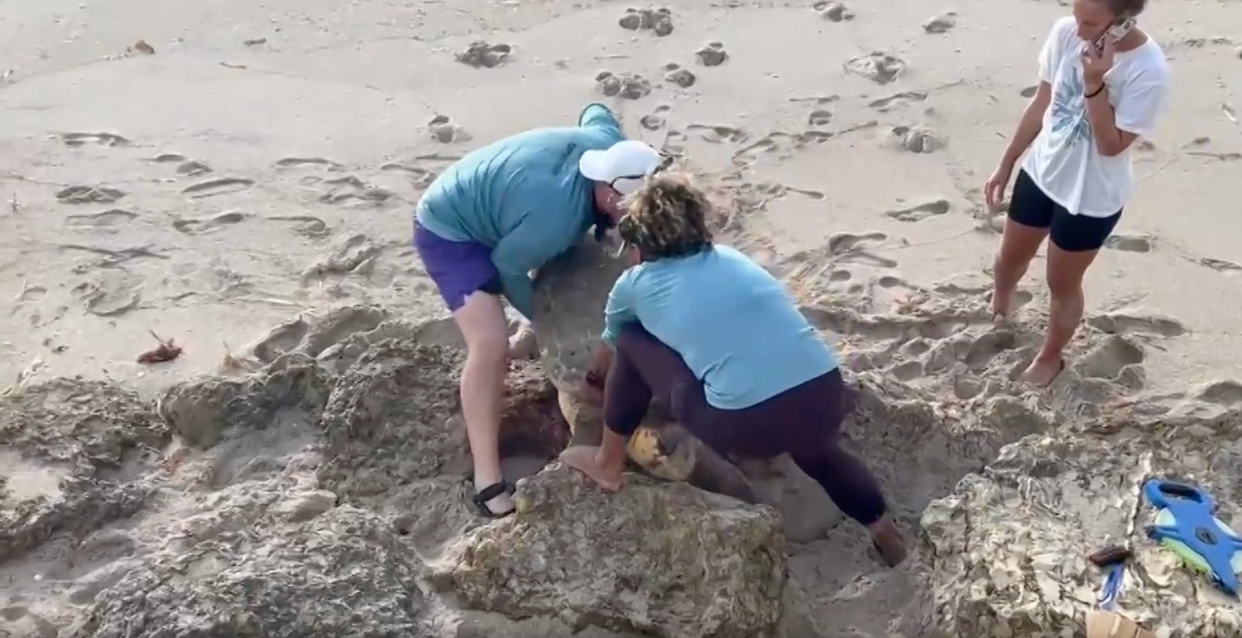Why do some female sea turtles fail to lay eggs? Here are six reasons for "false crawls"
A female loggerhead turtle that was rescued after wedging itself between rocks Monday morning did not nest during her interrupted trip along the beach, according to the town's sea turtle nesting monitor.
The 300-pound turtle, which was freed and released by D.B. Ecological Services, completed a "false crawl," said Christine Perretta, the firm's president.
False crawls occur when a female sea turtle crawls onto the beach but then returns to the water without laying eggs.
Approximately 50% of all sea turtle emergences result in false crawls, Perretta told the Daily News.

False crawls occur for a variety of reasons, according to the Florida Fish and Wildlife Conservation Commission. They include:
Artificial lighting
Nesting female sea turtles can be impacted by artificial lighting when choosing a nesting site or when returning to the sea. When choosing a nesting site, females may be deterred from areas that are too bright, which can cause them to select a less suitable location to lay their nests. If they do choose a beach with artificial lighting, they may abandon their nesting attempt.
Beach debris
Items such as trash, beach towels, tents, umbrellas, chairs or sand sculptures left on the beach can deter a nesting female sea turtle from laying eggs.
Disturbances
People or noises on the beach can disturb nesting sea turtles. Note: If you cross paths with a nesting turtle, it is important to stay out of the sea turtle's way. Don't put your hands on or near the turtle. Any distractions may frighten or disorient them, causing a female to return to the ocean before finishing her nest, the FWC says.
Nesting sites
Sea turtles may not be able to find a suitable nesting spot, such as an elevated location.
Sand
Sea turtles may not like the feel of the sand, especially if it is poor quality.
Coastal armoring
Physical structures such as sea walls, rock revetments and sandbags help protect coastal property from natural erosion, but they also can threaten sea turtle nesting habitats by interrupting the natural nesting process through a reduction of nesting habitat and displacement of turtles to less optimal nesting areas.
Jodie Wagner is a journalist at the Palm Beach Daily News, part of the USA TODAY Florida Network. You can reach her at jwagner@pbdailynews.com. Help support our journalism. Subscribe today.
This article originally appeared on Palm Beach Daily News: Why do sea turtles fail to nest? Here are six reasons for 'false crawls'
